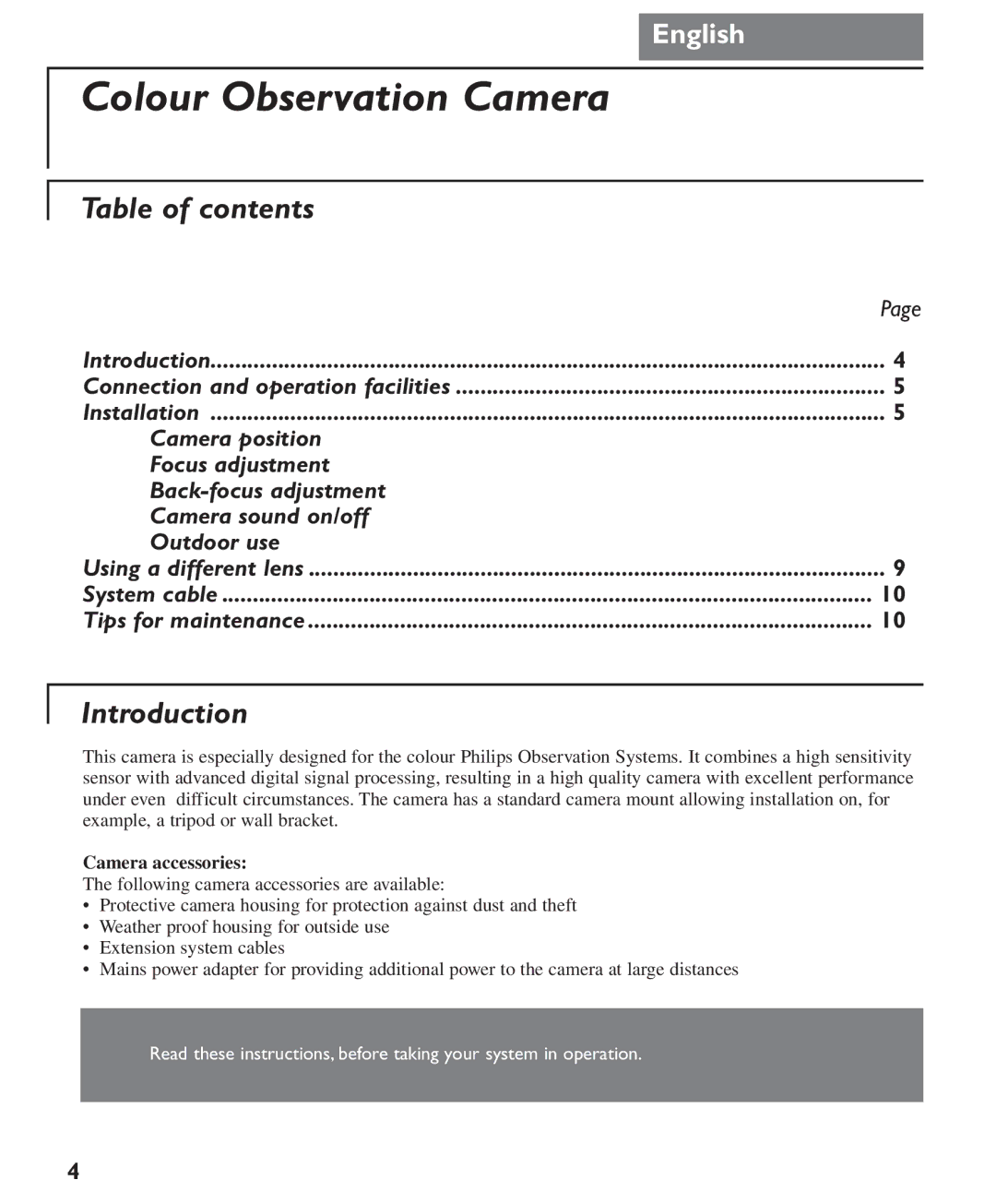Colour Observation Camera specifications
The Philips Colour Observation Camera stands out as a cutting-edge solution in the realm of medical imaging and diagnostics. Designed to meet the rigorous needs of healthcare professionals, this camera combines advanced technology with intuitive usability to enhance the quality of patient care.One of the main features of the Philips Colour Observation Camera is its high-resolution imaging capabilities. With superior color reproduction and exceptional clarity, the camera allows for precise visualization of anatomical structures. This high level of detail is critical for procedures where accurate diagnosis and intervention rely on visual assessment.
The camera is equipped with advanced imaging technologies, including a sophisticated sensor that captures images in a wide spectrum of colors. This means healthcare providers can observe subtle variations in tissue coloration, which can be indicative of underlying health conditions. With such capabilities, the Philips camera plays a vital role in various applications ranging from endoscopy to surgery, aiding in real-time decision-making.
In addition to its imaging prowess, the Philips Colour Observation Camera comes with user-friendly interfaces. Its ergonomic design ensures that it can be easily operated by medical staff without extensive training. The intuitive controls allow for quick adjustments of focus, zoom, and lighting, facilitating efficient workflows in busy clinical environments.
Another important characteristic of this camera is its versatility. It can be seamlessly integrated into existing medical systems, including operating room setups and diagnostic laboratories. This integration allows for streamlined workflows and enhances collaboration among multidisciplinary teams.
In terms of durability, the camera is built to withstand the challenges of a clinical setting. With robust construction and high-quality materials, it ensures longevity and reliable performance even in high-pressure situations.
The Philips Colour Observation Camera also incorporates advanced digital connectivity options. It supports wireless and wired connections, enabling easy transfer of images and video for documentation, remote consultations, or further analysis. This connectivity enhances collaboration among healthcare professionals and contributes to improved patient outcomes.
Overall, the Philips Colour Observation Camera represents a significant advancement in medical imaging technology. Its combination of high-resolution imaging, user-friendly design, and integration capabilities makes it an essential tool for modern healthcare. As the demand for precision in medical diagnostics continues to grow, devices like the Philips Colour Observation Camera will undoubtedly play a crucial role in meeting those needs.

